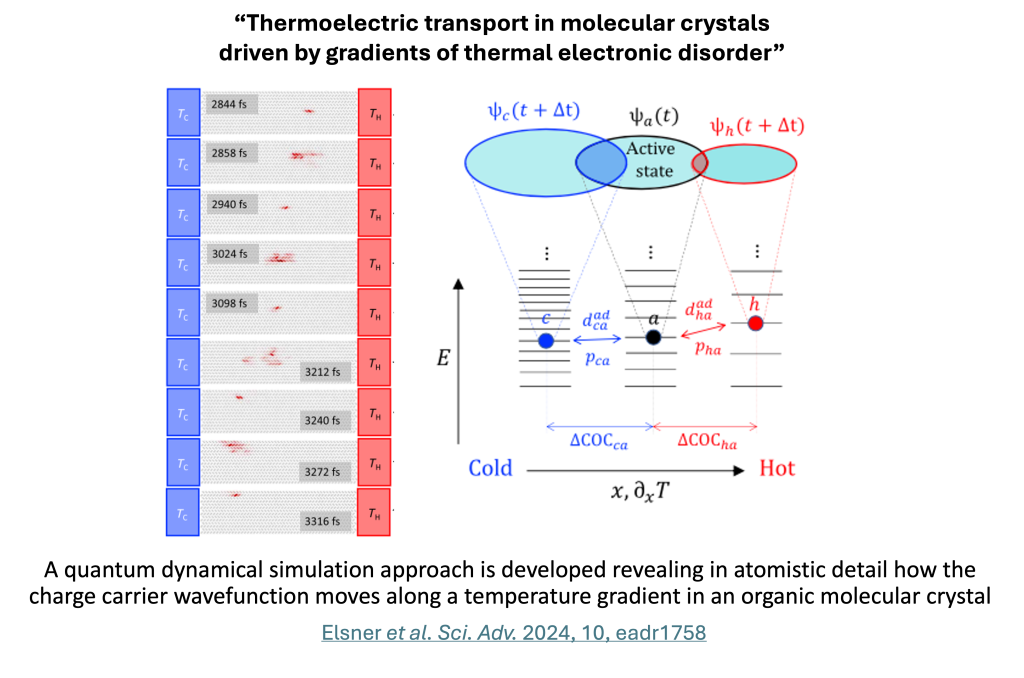Thermoelectric transport in molecular crystals driven by gradients of thermal electronic disorder

Thermoelectric materials convert a temperature gradient into a voltage. This phenomenon is relatively well understood for inorganic materials but much less so for organic semiconductors (OSs). These materials present a challenge because the strong thermal fluctuations of electronic coupling between the molecules result in partially delocalized charge carriers that cannot be treated with traditional theories for thermoelectricity.
In this work, we have developed a quantum dynamical simulation approach revealing in atomistic detail how the charge carrier wave function moves along a temperature gradient in an organic molecular crystal. We find that the wave function propagates from hot to cold in agreement with experiment, and we obtain a Seebeck coefficient in good agreement with experimental measurements that are also reported in this work. Detailed analysis reveals that gradients in thermal electronic disorder (i.e., thermal fluctuations in matrix elements of the electronic Hamiltonian) play an important role in determining the magnitude of the Seebeck coefficient, opening unexplored avenues for the design of OSs with improved Seebeck coefficients.
Authors: Jan Elsner, Yucheng Xu, Elliot D. Goldberg, Filip Ivanovic, Aaron Dines, Samuele Giannini Henning Sirringhaus and Jochen Blumberger
